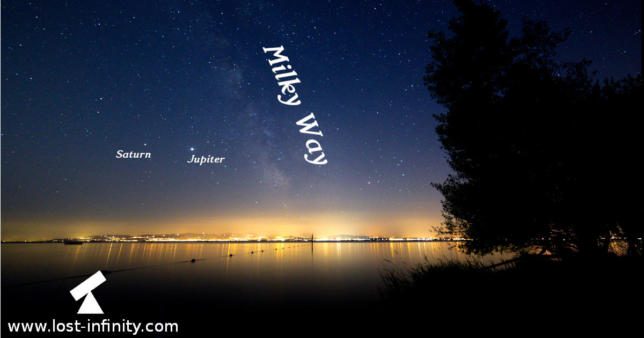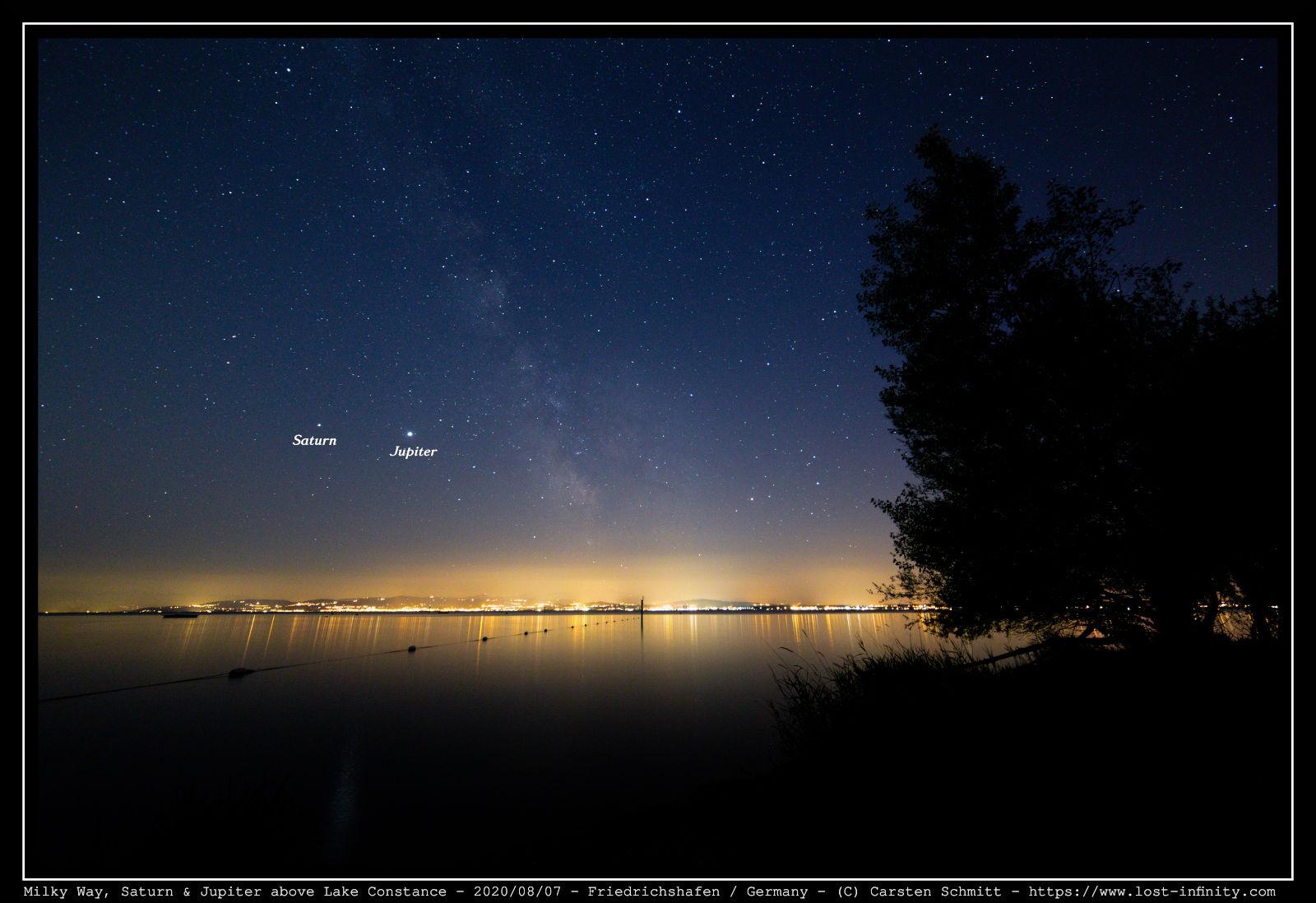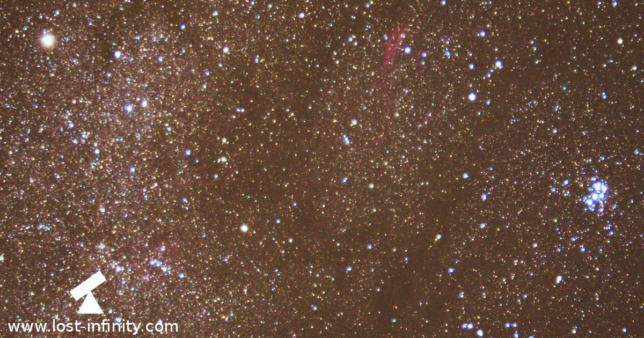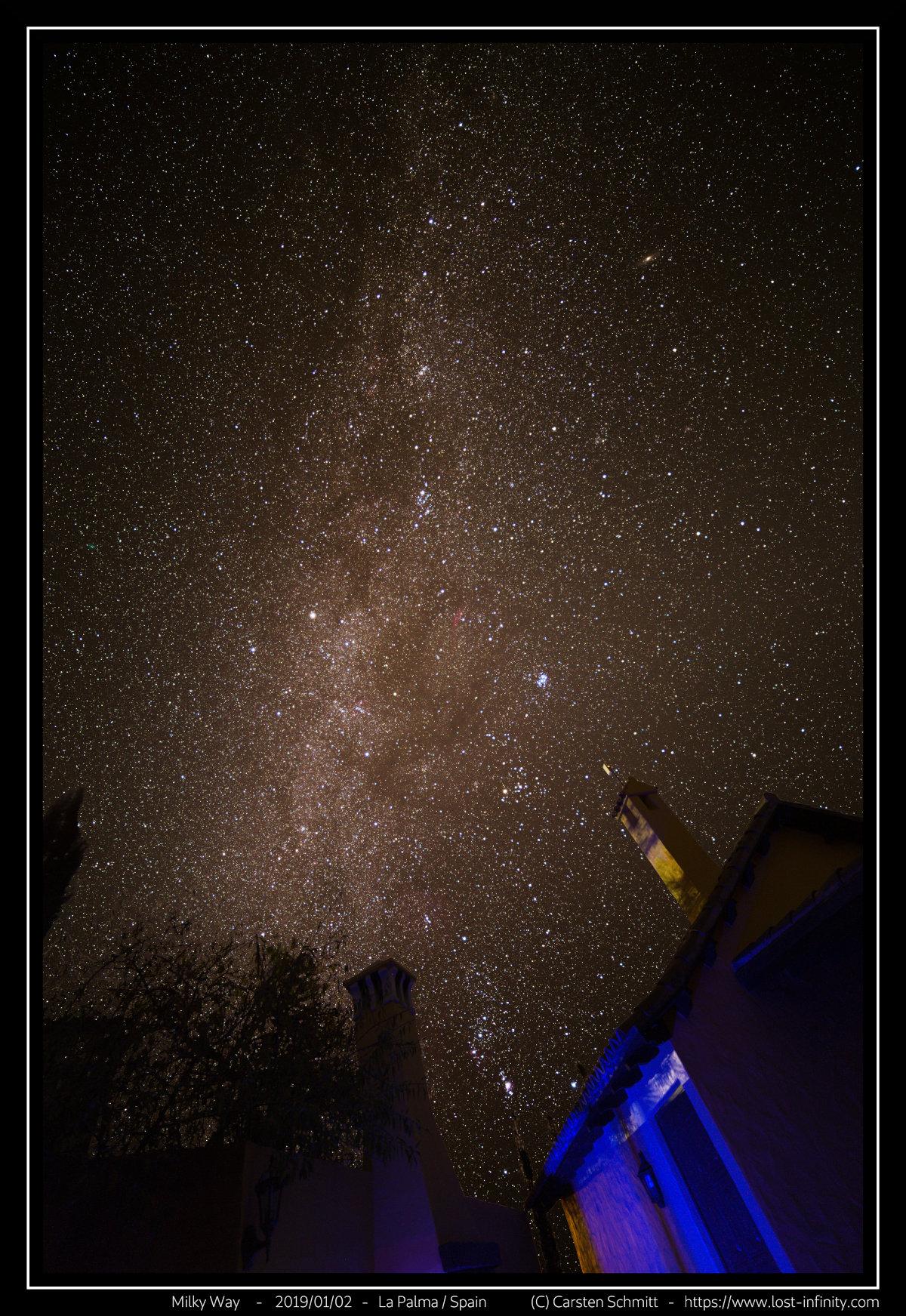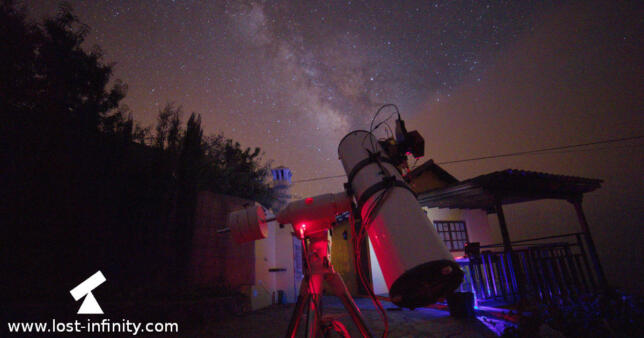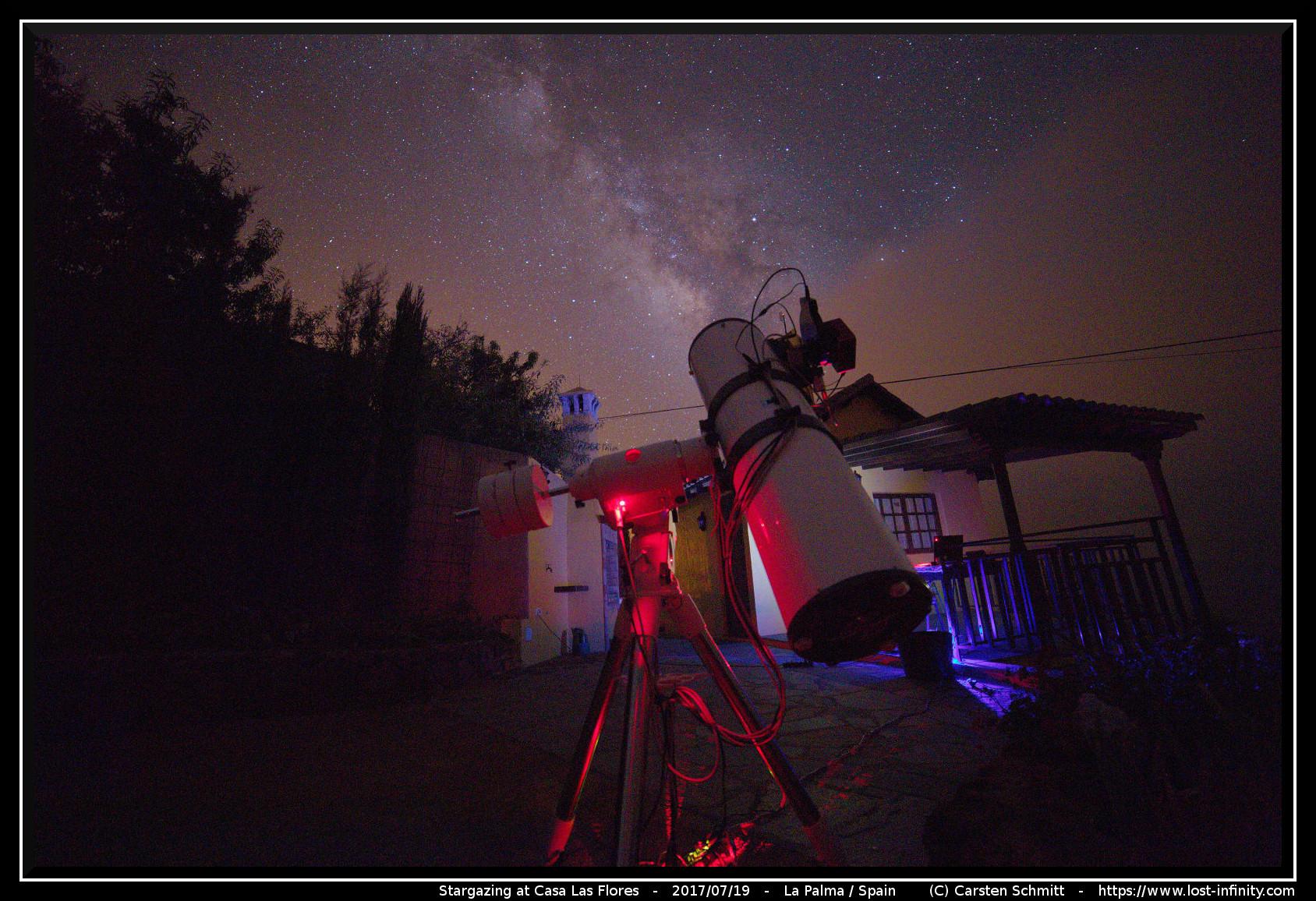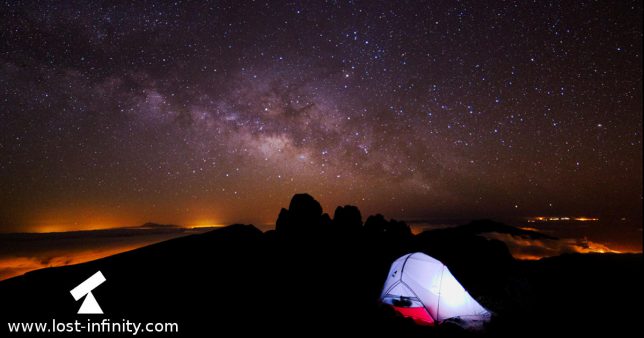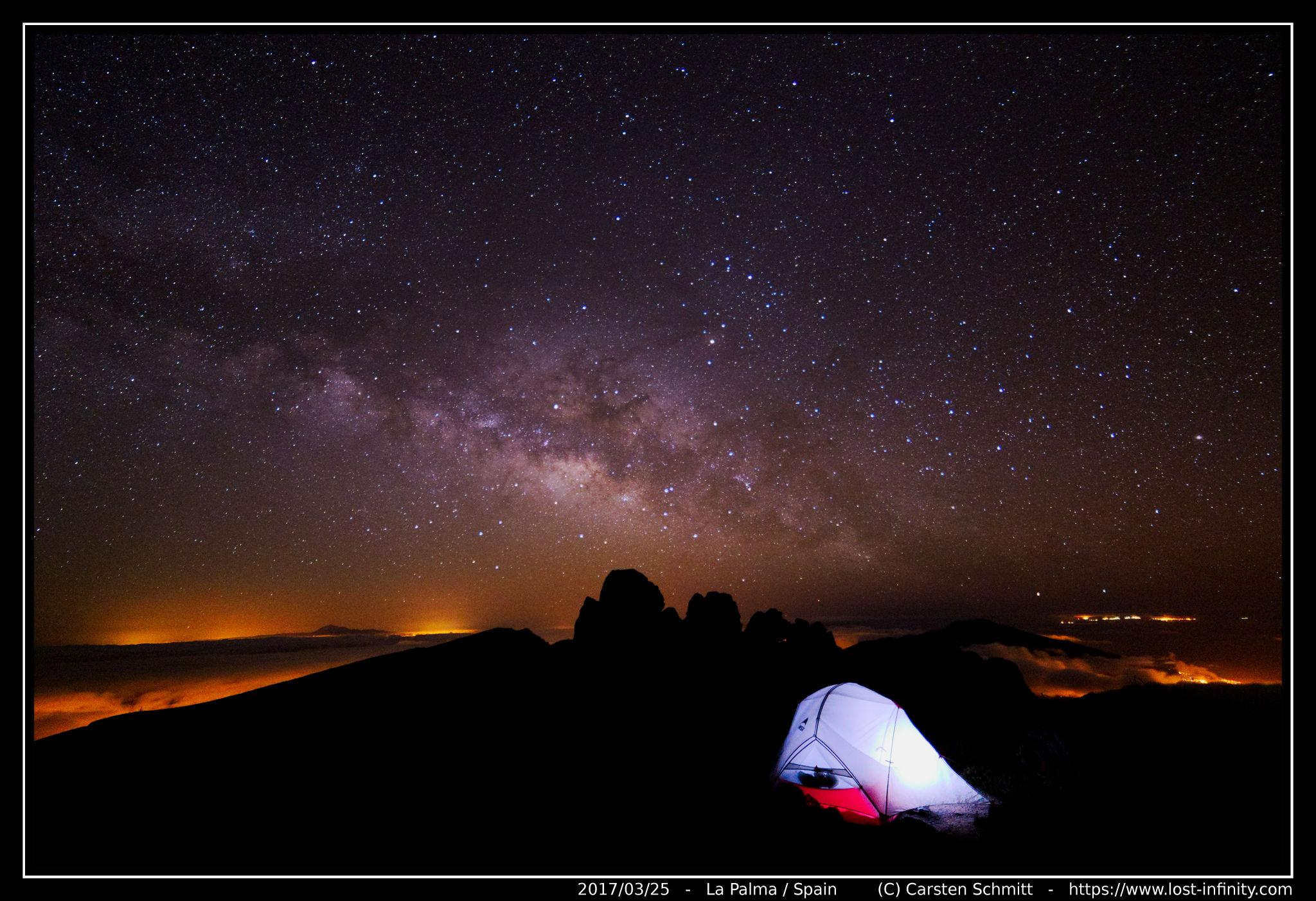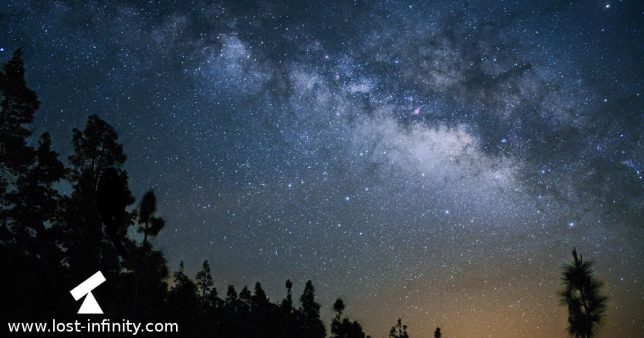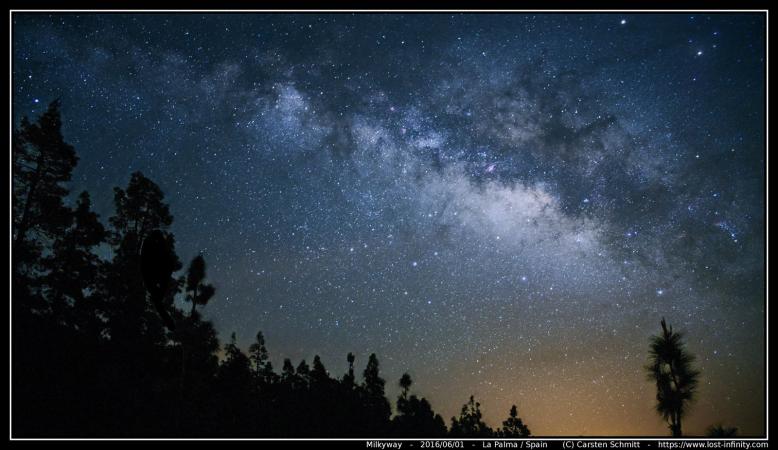The frames were then post-processed with rawtherapee and averaged using the ImageMagick “convert” tool. In addition 4 frames of the foreground (the house) were taken and also averaged (of course with disabled EQ6 mount). Finally the two pictures were overlaid and merged with the help of a mask using gimp.
To me it is amazing to see the Andromeda Galaxy (M31), the California Nebula (NGC1499), the Orion Nebula (M42), the Pleiades (M45) and the Horsehead Nebula (B33) clearly on this photo. This overview picture gives a good idea of the brightness, size and exact location of the objects compared to each other.
A full resolution image of the result can be found here. Another image without object descriptions can be found here. I am curious to repeat this procedure in summer when the bright part of the Milky Way will be visible again 🙂
Last updated: May 18, 2022 at 8:37 am





























